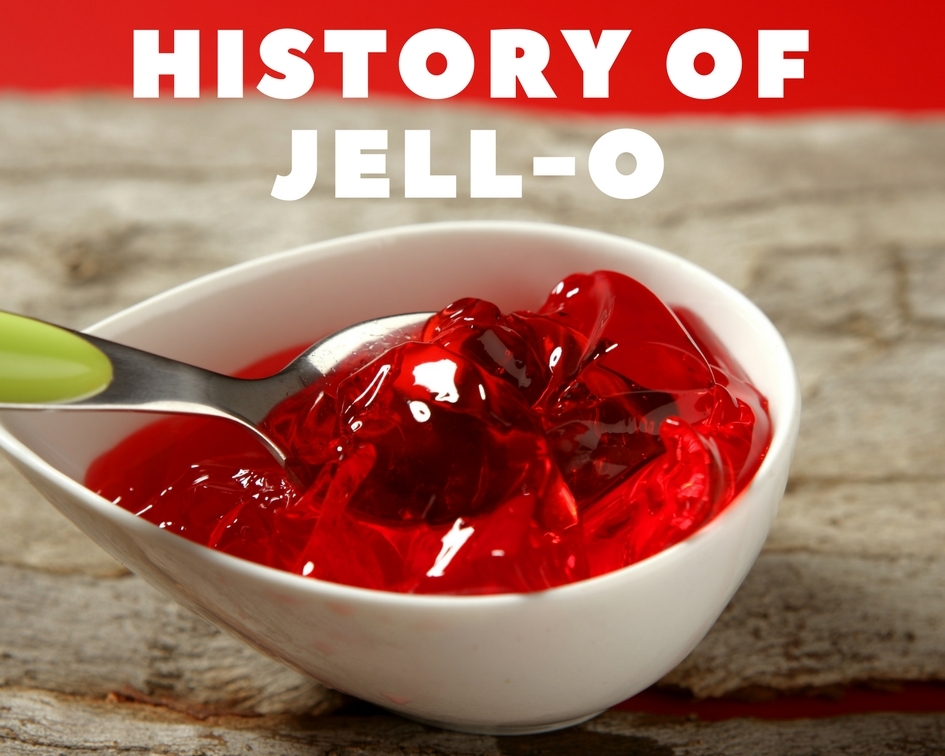Do you know the story of how this staple from your childhood came to be? While gelatin has been around since the 15th century, it took many years for Jell-O to become what it is today.
It all started in 1897 in LeRoy, New York. A man named Pearle Bixby Wait, a carpenter and cough syrup manufacturer, trademarked a gelatin dessert and named it ‘Jell-O.’ He and his wife, Mary, added new flavoring to the granulated gelatin and sugar – such as strawberry, raspberry, orange and lemon.
Then in 1899 Wait sold Jell-O to the Genesee Pure Food Company, who partly purchased Jell-O due to its name being similar to their popular healthy drink, Grain-O. With new technologies (such as refrigeration, powdered gelatin and machine packaging), Genesee Pure Food Company was able to improve Jell-O’s popularity. Particularly with their marketing game.
In 1902, Genesee Pure Food Company marketed Jell-O as “America’s Most Famous Dessert” in Ladies’ Home Journal. They also distributed free Jell-O cookbooks to increase awareness and make Jell-O a go-to for households. Over the next 10 years they introduced new flavors such as chocolate, cherry and peach. Advertisements also included recipes, celebrity testimonials (such as actress Ethel Barrymore) and paintings to grab the attention of their target audience.
By the 1920s, Jell-O was a staple in most American households. In 1923, Genesee Pure Food Company launched artificially sweetened Jell-O called D-Zerta. Then in 1925, they merged with Postum and 2 years later they acquired frozen food company General Foods Corporation. The popularity of Jell-O continued to skyrocket and everyone was singing “J-E-L-L-O!”
The 1930s – 1950s brought a new trend for congealed salad. This new fad for aspic and salad recipes included ingredients like cabbage, celery, green peppers and cooked pasta. To go with the trend, Jell-O introduced new flavors such as lime, celery, Italian, mixed vegetable and tomato. Needless to say, all were discontinued except lime.
This time period also introduced a new line of Jell-O products for instant puddings, which favored flavors like chocolate, vanilla, pistachio, butterscotch and more!
The 1960s-1980s changed things for Jell-O. Sales decreased because Jell-O was no longer an everyday food for busy moms of the baby boom generation. To combat this, the brand continued to introduce new products, try different marketing tactics and more.
They tested new flavors, such as apple, black cherry, grape, mixed fruit and more to appeal to more users and broaden their audience. Trying to worm their way back into people’s hearts and kitchens, they came up with the 1964 slogan “There’s Always Room for Jell-O.” They also had a new spokesman, Bill Cosby. Then in 1980 they tried the slogan, “Don’t forget – you have to remember to make it!”
Keeping with the quick and easy theme, Jell-O released their “No-Bake” dessert line in 1966, which promoted a 15 minute cheesecake. 3 years later Jell-O 1-2-3 come out, which was gelatin that seperated into 3 layers when cooled. In the 1970s they added Jell-O Pudding Treats, Jell-O Whip n’ Chill, new Sugar Free Jell-O (which replaced D-Zerta in 1984), Sparkling Jell-O and Jell-O Jigglers to their lineup.
In 1990, General Foods merged into Kraft Foods; however, Jell-O’s family-friendly image was diminishing thanks to Jell-O shots and Jell-O wrestling. They continued to market Jell-O with new products and flavors and jingles, trying to gain more traction among households.
10 years later Utah named Jell-O as the state’s favorite snack food. They declared “Jell-O Week” (February 12-18) and highlighted their love for their jiggly snack with a souvenir green Jell-O pin at the 2002 Winter Olympics in Salt Lake City.
Today, with over 110 products under the Jell-O name, over 420 million boxes of Jell-O gelatin and over 1 billion Jell-O cups are sold in the United States per year.
You can learn more about Jell-O’s history by going to its home in LeRoy, New York and visiting the Jell-O museum.
